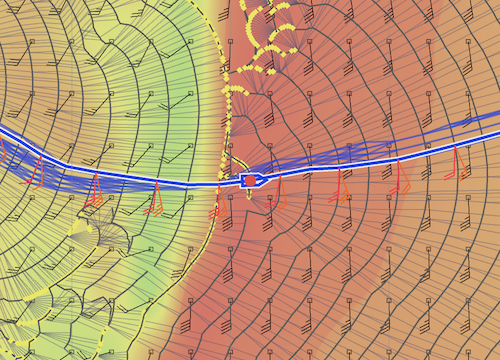
It is my hope that through careful planning and navigation, while frequently updating your weather forecasts and route while on a passage, that you will be able to avoid extreme weather conditions. However, this may not always be possible.
There are some routes, and times of the year, where you can not be guaranteed to be able to avoid a gale while at sea. Everybody should be prepared for encountering a gale. Storms are clearly different - you will want to try your best to avoid encountering a storm.
However, it is not my role to provide advice on when and where to sail. As the navigator in charge, it is your sole responsibility to make these decisions.
The heave to tools in LuckGrib I can help you understand some of the decisions that are available to you. To increase your understanding of the weather systems and how you can travel through them.
If you do encounter strong winds while at sea, what you do will depend on a lot of things. A short list to consider is:
- the relative angles of the winds and the vessel.
- the strength of the winds.
- the wave state.
- the amount of sea room you have.
Depending on, well, everything, heaving to may be a good choice for a navigator to make. It is hoped that with the support for being able to consider heaving to as an option in the weather routing system, that you will be able to gain some insight into your navigation options.
There are three distinct phases to the process of heaving to: deciding when to heave to, carefully monitoring your vessel while hove to, and deciding when to start sailing again.
Note that a path which heaves to for some duration may not always be faster than a path which sails further to avoid those conditions. If you enable the allowed to heave to setting, you are encouraged to also enable the ensemble setting to generate solutions with and without heaving to.